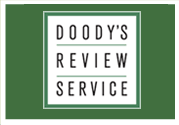|
|
|
eBook/Digital Version available from:
|
 Score: 78
Score: 78 |
 |
| Vaccine Communication Online: Counteracting Misinformation, Rumors and Lies |
 |
ISBN: 978-3031244896,
200 pages,
Hard Cover
ISBN-10: 3031244893 |
 |
| Copyright: |
2023 |
 |
| Edition: |
1st |
 |
| Editor: |
Ginossar, Tamar; Shah, Sayyed Fawad Ali; Weiss, David |
 |
|
Specialties:
|
Infectious Disease
, Public Health
, Library and Information Science
, Patient Education |
 |
| Publisher: |
Springer |
 |
| Imprint: |
Palgrave Macmillan |
 |
| List Price: |
$139.99 |
 |
| Google: |
|
|
 |
|
|
|
|
At A Glance
|
Communication about vaccination has become a public battleground. The global adoption of social media has increased the visibility and influence of groups that were previously considered fringe. With the goal of understanding vaccination-related misinformation?s online spread and ways of effectively countering it, this book explores its reception, resistance, and reproduction by a range of stakeholders around the globe. Chapters cover a rich array of topics, including vaccine misinformation?s history, its use as political propaganda, and its manipulation by both pro- and anti-vaccine groups. They apply a wide range of research methods, including historical literature and scoping reviews; advanced computational analysis, including machine learning; and reviews that incorporate the authors? personal, professional, and practice-based experiences. Chapter authors include leading US and international scholars as well as practitioners of Communication, Computer Science, Health and Science Education, Political Communication, Public Health, Sociology, and other fields, making this book the most comprehensive and diverse collection of studies on vaccine misinformation - online and offline - currently available.
|
|
Reviewer:
|
Chana Kraus-Friedberg,
AHIP, MSLS, Ph.D
(Michigan State University Libraries)
|
 |
|
Range
|
Question
|
Score
|
| 1-10 |
Are the author's objectives met? |
8 |
| 1-10 |
Rate the worthiness of those objectives. |
10 |
| 1-5 |
Is this written at an appropriate level? |
5 |
| 1-5 |
Is there significant duplication? (1=significant, 5=insignificant) |
4 |
| 1-5 |
Are there significant omissions? (1=significant, 5=insignificant) |
4 |
| 1-5 |
Rate the authority of the authors. |
4 |
| 1-5 |
Are there sufficient illustrations? |
5 |
| 1-5 |
Rate the pedagogic value of the illustrations. |
2 |
| 1-5 |
Rate the print quality of the illustrations. |
2 |
| 1-5 |
Are there sufficient references? |
5 |
| 1-5 |
Rate the currency of the references. |
3 |
| 1-5 |
Rate the pertinence of the references. |
3 |
| 1-5 |
Rate the helpfulness of the index. |
3 |
| 1-5 |
If important in this specialty, rate the physical appearance of the book |
N/A |
| 1-10 |
Is this a worthwhile contribution to the field? |
8 |
| 1-10 |
If this is a 2nd or later edition, is this new edition needed? |
N/A |
|
 |
|
Reviewer:
|
Chana Kraus-Friedberg,
AHIP, MSLS, Ph.D
(Michigan State University Libraries)
|
 |
|
Description
|
| This book covers the social spread of vaccine misinformation online. It includes chapters on the history of vaccine hesitancy, information on people who spread information and their methods, and some practical strategies to discourage belief in vaccine misinformation. |
 |
|
Purpose
|
| The book's stated purpose is to examine contexts where misinformation about vaccination is spread, its impact on different cultures, and ways vaccine hesitancy can be reduced. The COVID-19 pandemic and reactions to the COVID-19 vaccine have made it clear how important these objectives are. While the topic of vaccine misinformation is vast, this book does meet these objectives. |
 |
|
Audience
|
| The book is aimed at health and communication researchers and public health practitioners. Researchers will probably find more of this book relevant than practitioners will, but each group will find some chapters useful. Authors hail from each of these groups with demonstrated authority in academia, research, and clinical or public health practice. |
 |
|
Features
|
| The book addresses several different vaccines, including those for HPV, polio, and COVID-19. Topics include the history of vaccination and vaccine resistance, the types and nature of the misinformation that is spread online, and methods that anti-vaccine networks use to spread their message and make it appealing. The book's research does contain gaps, as noted by the authors. Chapters predominantly cover English-speaking countries and English-language communications on social media. Twitter is somewhat overemphasized as its data policies have traditionally been more research-friendly than other platforms. However, these gaps may reflect the field as a whole, not just in this book. |
 |
|
Assessment
|
| This book is well-written and covers several relevant topics about online communication and vaccine misinformation. It represents a useful addition to an existing body of research. The book lays out a program for future research and offers some advice for interdisciplinary teams working on communication and health, which may be useful to researchers. Practitioners, though, may benefit from the chapters on public attitudes and lessons learned from past campaigns. |
 |
|
|
|
|
|
|
|
